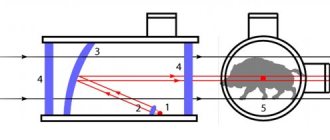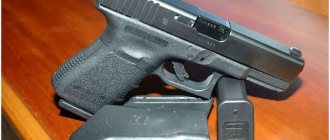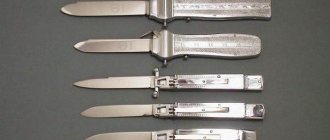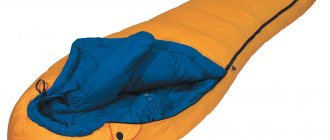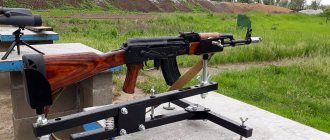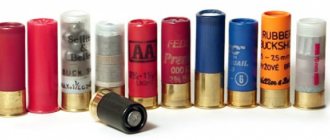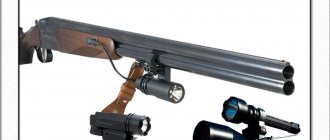Attention! Bow hunting is prohibited on the territory of the Russian Federation; this information is provided for informational purposes only. Follow the hunting rules and laws of your country.
The bow is the oldest weapon of the hunter. It is from his invention that many historians count the moment when a monkey with a club began its path to Homo sapiens. Today, bows are mainly used for clay pigeon shooting and sports shooting, and it is believed that they have been completely replaced from the hunting sphere by much easier to use guns and crossbows. However, if you replace a homemade stick with a silk cord with a modern compound bow, which in its configuration is not inferior to a sophisticated firearm, then the situation will immediately turn out to be not in favor of the gun hunter. A bow for hunting is a weapon of physically strong men, it has a surprisingly high destructive power, is almost silent, economical and does not damage the skin of the animal like rifle ammunition.
Hunting bows: types and features
There are three types of onions, differing in their design:
Simple . In the yard, while still boys and girls, many played “Indians”, etc. It was at this time that many people got their first bows - made by their parents or with their own hands. This is a classic simple hunting bow. Basically, they are made to be full-length, like those of archers of the Middle Ages. However, using such weapons in the forest is very inconvenient, so smaller models have become more widespread. The width of such weapons is 50 mm in the middle and 16 mm at the ends. As soon as the bark is removed from the workpiece, the edges are pulled together and grooves are made for mounting the bowstring. As soon as the onion takes the correct shape, it is immediately coated with oil or fat. The easiest way to make a bow with such a device is to make it yourself.- Compound or compound bow . It is not so difficult to make it with your own hands, and such a bow itself is much more effective than the previous version. It is assembled from 3 pieces of wood. The base is a hammer, and all other parts are attached to it.
- The pinnacle of evolution, the best modern hunting bow is a compound bow . If you still use a complex or simple bow, then you should either purchase a compound bow, or pore long and hard over physics textbooks (especially mechanics) and assemble such a miracle weapon yourself.
Compound bow benefits:
- its string is much easier to pull;
- aggressive and futuristic appearance;
- increased combat range;
- A compound bow is more accurate and allows you to hunt any game.
However, there are also disadvantages:
- Many high-tech devices cannot be installed on a classic compound bow (or any other).
- This weapon must be selected or made individually, taking into account a bunch of anatomical features. This is not a firearm that can be stamped in batches and all problems solved with recoil pads; even a special tuning kit, which is usually supplied with a compound bow, will not always help here.
The right approach to buying onions
You can understand people who recommend purchasing the cheapest classic option as your first bow. With minimal costs, it will not be so difficult to say goodbye to the finances spent on purchasing weapons if you lose interest in them. But professional athletes think differently. Having picked up a toy and not getting the required result, the desire to shoot a bow can disappear forever, and a real bow, capable of piercing a centimeter board from fifty meters, will become the idol of any novice shooter.
There is only one conclusion: if you plan to hunt with a bow, then the choice should not fall on a cheap purchase. Cost savings can be achieved by choosing an entry-level gun. The tension force of the bow must be at least ten kilograms, otherwise you can forget about hunting. Ideally, for a beginning hunter of feathered and fur-bearing animals, it is recommended to purchase a “thirty” - 30 pounds, this is a tension of about 13.5 kg.
How to choose a bow
- First, think about why exactly you need a bow, and how will you use it? What range are you going to hunt, who, and most importantly, can you handle this bow? Therefore, if you are buying sports bows or a compound bow for hunting, then a visit to a special service center and testing of the weapon is strictly necessary, even for experienced archers. The animals won’t ask if you’re wearing the same clothes you wore during training, and even less so if they wait for you to concentrate. It’s okay if it’s a deer, but what if you suddenly plan to hunt a wild boar or bear with a bow? Such an adventure could end very, very badly. As a result, it is better not to place a classic order via the Internet, but to go to the store and choose a hunting bow there, or make it yourself according to individual parameters.
Long bows are well suited for distances of more than 50 meters, short ones - up to 50 meters, in addition, they provide greater maneuverability and mobility to the hunter.- You should not blindly trust archery athletes who, when purchasing a bow, will rush to measure the distance from their fingertips to their chest, etc. It would be more useful to optimize a hunting bow for different shooting styles, different clothing, etc. This is not skeet shooting.
- The length of the limbs does not greatly affect the accuracy of the bow.
- Hood, as mentioned above, is not measured anthropologically. It matches the handle of the bow and your own way of holding it. Without wisely executed choices, you will never hit anything smaller than a tree trunk at 30 meters.
- It is better not to touch the bow blocks after purchase, the strength of materials is a subtle joke, and after trying to independently “upgrade” the weapon can change far from for the better.
- A special “hunting shelf” is more of a hindrance than a help.
- It is better to take bows without a hilt, they are more accurate.
- For beginners, it is better to limit yourself to simple sights with 3 pins - at 25-30 meters, and plus or minus ten from it. When you gain experience, you can take much cooler scopes with a bunch of settings and shoot bears from 100 meters, but you definitely shouldn’t start with these.
- It is better to take 12-inch stabilizers; six-inch ones can significantly reduce shooting accuracy.
So think about whether you are ready to spend your time and money on purchasing such a complex classic weapon as a hunting bow, or should you limit yourself to firearms.
However, if you have not yet given up on this purchase, now you know how to choose the right compound bow.
Which bow to choose for a beginner
It is better for a person who is just starting to learn shooting to give preference to classic models. This is due to several reasons. First of all, this bow is the easiest to use; it has stabilization systems and a sight. In addition, it is convenient to store, since most classic models can be disassembled.
Beginners should avoid choosing traditional bows for several reasons. Firstly, their accuracy is much lower than others, making them more difficult to shoot. Secondly, for such bows you will have to buy expensive arrows with natural feathers. Thirdly, you need to allocate a large space for storing them, since they cannot be disassembled. The complexity of working with such models can completely discourage a beginner from developing shooting skills.
Compound bows should be avoided due to their high cost. Their price is 2 times higher than that of classic models. In addition, the shooting technique with them differs significantly from the standard one, so they are not the best option for developing basic skills. In this regard, only experienced specialists should work with them.
Arrow selection
Don't try to buy arrows as cheaply as possible. Economy class arrows can break after the first launch, while elite ones can survive even the hundredth.- Arrows should be selected according to length, rigidity, weight, and aerodynamic stability.
- Sporting arrows are not suitable for hunting because they have a bullet-shaped tip, which makes it easier to pierce the target and remove the arrow. For hunting, the tip is made of several sharp blades or like stun guns. In addition, bow manufacturers indicate the requirements for arrows in special large tables, which are usually posted on the websites of the manufacturing company.
- Beginning archers should buy ready-made arrows; only experienced craftsmen can make them component by component when repairing or assembling arrows “for themselves.” The design of high-quality arrows is quite complex, so it is almost impossible for a beginner to make them.
- Regarding arrow components:
- Shaft: made of aluminum or carbon.
- Shank: plastic.
- Feather: There are three main types: straight, angular and helical.
- Insert: in fact, this is a mount into which the tip is screwed.
Bowhunting: legal aspects
In Russia, this phenomenon is quite ambivalent: on the one hand, bow hunting is not allowed, on the other hand, it is not prohibited. Therefore, everything at the moment depends on the understanding of the law by an individual law enforcement officer, the hunter himself and his superiors.
What can a law enforcement officer do?
- If a law enforcement agency does not like the bow for any reason, it may be confiscated for examination. And if it turns out that GOST requirements for bows are not met, you will receive a fine (+ confiscation of an expensive device).
- If you don’t like the arrows, they can confiscate all the equipment and issue a fine for using weapons not provided for by GOST.
In such cases, the owner of the weapon can refer to legal documents and the fact that the presence of equipment that does not comply with GOST is not a reason for its confiscation (home-made cartridges from firearms are not confiscated), and besides, you did not violate the hunting rules.
There can be a whole bunch of problems (especially considering the total dislike of both sides for reading thick and boring books on law), so it’s better to solve them immediately and forever:
- Simply by talking to game owners or local law enforcement. If there have been no unpleasant precedents with bows, you have all the necessary papers in your hands, and you behave tactfully, then most likely you will be allowed to hunt. Of course, at first they will impose some restrictions (to go with a huntsman, not to go somewhere, to hunt at some special time, etc.). But after a couple of visits, when you have already made useful connections and are not creating problems, you will be able to go hunting freely.
- Have with you certified copies of all necessary papers (hunting license, hunting permit, documents for the bow - quality control certificate, manual, translation of technical documentation into Russian, sales receipt for the bow). Usually all these jokumenta will not be required, but it is possible that in remote villages the police can get pretty close to the archer.
- No production - no problems. If you haven't gotten anything yet, don't say you're going hunting at all. You shoot at banks, take videos - whatever. Why do you need extra problems?
- If, nevertheless, the police officer insists on the seizure, and it is not possible to convince him, then it is necessary to draw up a report with witnesses in accordance with all the rules.
With all that said, forget about ever wondering how to make a homemade compound bow with your own hands. Your crazy hands will be taken away along with your bow, and it’s scary to think how much it will cost you to pay the fines.
Legal standards
There are many disputes on the Internet between owners and potential buyers regarding the legality of purchasing, carrying and using throwing weapons, which include bows and crossbows. Each state in the post-Soviet space has its own legal framework. For Russia, for example, there is a Federal Law “On Weapons” 150-F3. If we put together articles 3, 6 and 13, we can conclude that throwing weapons in Russia are allowed only to participants in sports sections and for carrying out scientific research and preventive work related to the immobilization and injection of animal objects. Bowhunting can freely hide behind this law. There is also GOST R 51715-2001, which allows the presence of throwing weapons, the tension force of which is no more than 12 kg.
Bowhunting: practical tips
- You must not lose sight of the target, otherwise you may lose it (and then suddenly find it not far from you, especially unpleasant if it is an aggressive animal).
- When stretching the bowstring, keep your index finger on it, otherwise you may accidentally fire the shot earlier than necessary.
If you have the habit of holding the arrow on the shelf with the fingers of your left hand, then be sure to release it before releasing the bowstring. Otherwise, you will get an extremely awkward situation when you break the bowstring again and again, and only after a few minutes of convulsive torment (when the game has long since disappeared) you realize that the problem is in your left hand, which does not let go of the arrow.- The sight pins need to be multi-colored and bright, no more than 3 when shooting at different distances, otherwise you will end up with an arrow in milk.
- Always try to maintain a "T" shaped body position when shooting. Even if you shoot down or up, you only need to bend in the lumbar region, otherwise the body position should remain unchanged.
- After you have released the bowstring, do not drop your left hand (or right hand in the case of left-handers), but hold it for another three seconds, otherwise the arrow will go lower.
- Do not take positions behind branches or trees; for a good shot you need as clear a space as possible.
- Clothing greatly affects the quality of the shot. If you find yourself in unusual equipment (camouflage, gloves, etc.), and not in the training T-shirt in which you are used to shooting, you can easily miss. Therefore, it is worth training in exactly the same outfit in which you will go into the forest, buying specialized clothing or trying to “feel the body.”
The bowstring should not be released instantly at full tension, especially on block weapons. You need to shoot after exhaling a second or third time after drawing, making sure that the aiming line smoothly approaches the target and anticipating the swing.
